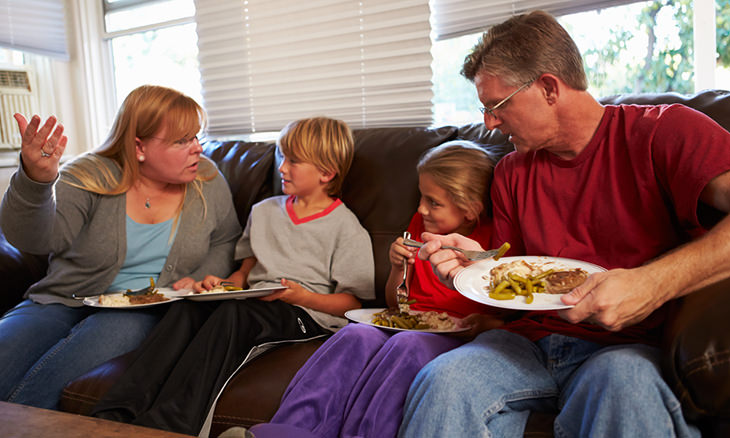It takes more than just disagreements or frequent arguments for a family to be considered dysfunctional. The hallmarks of a dysfunctional family are members being neglectful toward one another, as well as frequent verbal and physical abuse. The question is can a dysfunctional family be fixed when things have already gotten that bad? Let’s take a look at the issue:
A dysfunctional family is pretty easy to spot – you get parents constantly comparing children, siblings in conflict with each other because of tolerated bullying, domestic violence and, on occasion, one or both of the parents committing adultery.
Inevitably, this leads to emotional pain and even trauma, and such a situation can create a detrimental effect on younger family members’ personalities and development. This doesn’t mean that the parents won’t be affected, because they often take on the roles of abuser and codependent. In certain instances, it can be both parties inflicting pain on one another.
Such situations are often mistakenly believed to arise from deep-seated issues that are nigh on impossible to resolve. The truth about this is that issues cannot be resolved if a family is not willing to do what it takes to resolve them. On the other hand, it only takes a single determined family member to begin making progress.
How to fix a dysfunctional family

Fixing a dysfunctional family starts with the involved parties dropping their egos and focusing on solutions. Instead of blaming each other for responsibility for the situation, they must unite to do the work required for the good of the whole family.
It’s important to remember that families become dysfunctional when the problems are well-known and there’s an unwillingness to fix them. This leads to harmful behaviors being perpetuated, which can even result in cases of abuse and physical violence.
Is your family dysfunctional, or just average?
Most families are dysfunctional to some degree or another, with milder cases just being labeled “typical” thanks to comically-shrouded bullying or a lack of interest in other members’ wellbeing. With that being said, a key identifying trait of a dysfunctional family is how its members interact with each other.
If its members are anything other than cooperative with each other or fail to care and support each other, then the likelihood is that the family is dysfunctional. This is also true if its members suffer emotional and/or physical harm, which is usually perpetrated by the parents. Even “passive” actions such as neglect can signify dysfunction within a family.
Dysfunctional families have conflicts such as:
• Unrealistic expectations
• Lack of interest and time spent together
• Sexism
• Utilitarianism
• Lack of empathy
• Unequal or unfair treatment
• Disrespect towards boundaries
• Control Issues
• Jealousy
• Verbal and physical abuse
• Violence and even sexual misconduct or abuse
Dysfunction and productivity

Individuals that aren’t in a good emotional state will not be able to perform as they desire to, because the emotional harm that has been inflicted upon them will hinder them by affecting their ability to concentrate, cloud their mental clarity and lower their levels of inspiration, motivation, and discipline.
A functional family is the exact opposite of the above – it contains productive members that don’t carry emotional baggage around with them everywhere they go.
How to turn things around
If you’re part of a dysfunctional family, then you must start bringing an end to the dysfunction by ending the behaviors and actions that are affecting you. One thing in common that all members of a dysfunctional family have is that none of them seek to put a stop to the damage that’s being done.
When personal boundaries are being overstepped, family members have to remember to just STOP, however, this can only happen when a problem has been identified. Once this has been done, an expression of dissatisfaction about the problem should be made.
Dysfunction cannot be fixed by one family member

A team effort is required to ensure that a family doesn’t remain dysfunctional, but all it takes is the initiative of a single member to get the ball rolling in the right direction. In other words, cooperation between family members is vital. If you find yourself in such a situation and want to initiate change, don’t hesitate to ask for cooperation.
Although some of us have a tendency to dismiss our needs as being unimportant relative to those of others, it can be surprising to discover how responsive people are when our needs are voiced.
Individual relationships must be fixed first
Relationships are always between two people, and two people only, so these must be fixed individually before all of the involved parties attempt to cooperate with each other. Regardless of its complexity, the quality of a multi-member relationship will always be dependent on the quality of the individual relationships.
Once individual relationships within a dysfunctional family have been fixed, there’s the possibility for much better communication between family members. This is the point where the real fix can be used.
Method

1. Drop the ego
Ego can be found wherever there is conflict, and relationships simply cannot be fixed when people’s egos get in the way. That’s why they need to be left behind if members of a dysfunctional family have any hope of fixing theirs.
2. Responsibility rather than blame
When speaking about someone’s mistakes, it’s often the case that the discussion can come across as accusatory. This could lead to the person going on the defensive, which will inevitably lead to the failure of the negotiation. That’s why mistakes made by an individual should be pointed out to them calmly – doing this will prevent them from going on the defensive, thus taking the tension off.
3. Do the work
All of the above would mean absolutely nothing if no effort is put in to change things. That’s why it’s necessary to follow up agreed-upon changes with action. If a person isn’t pulling their weight in this regard, then the issue needs to be brought up in a clear and positive manner so that they’re reminded of the agreement they made, as well as how important it is to the wellbeing of the family that the agreement is respected.
4. Love is all you need
A family’s dysfunction can be put to rest if its members allow their actions toward each other to come from a place of love. If one or more family members refuse to change, however, then the only solution is to walk away. After all, the onus is on individuals to ensure their own happiness and freedom.
Content source
Images by Deposit Photos.
 Go to BabaMail
Go to BabaMail




























